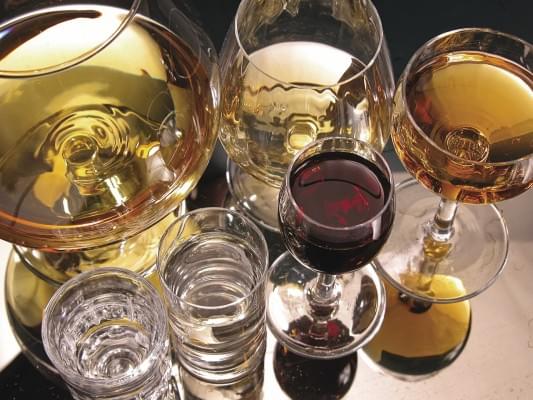In a bad patch
Hungary’s spirits market has changed dramatically in the last five years, but some say it all started back in 2003 when excise duties were abolished before Hungary’s accession to the European Union. Before that Hungarian products dominated the domestic market and only one fifth of products came from import.
It wasn’t too difficult to accommodate to the new situation as the market was expanding by 10 percent a year. The proportion of imported spirits rose to 40 percent. Economic recession started at the end of 2008 and the first change in excise duty regulation was made in 2009 – later four more followed. Today in Europe (with the exception of the Scandinavian countries) the tax on spirits is the highest in Hungary: 50 percent in the quality category and 80-85 percent in the commercial category. The first big blow for firms in the spirits industry was the new tax law in 2010, stating that each household has the right to have 50 litres of spirit distilled per year without having to pay any excise duty. This measure entailed an increase from 20-percent to 40 percent in the share of ‘home-distilled’ pálinka – a large part of which supposedly wasn’t consumed but sold. All this happened in a period when the image of home-distilled pálinka strengthened so much that it became a competitor of quality pálinka categories. Result: according to data by Nielsen, premium category pálinka sales have been dropping by 7-8 percent a year since 2008. The second shock for the industry was Act 7 of 2011, which put spirits into two excise duty categories: in the basic category HUF 2,900 have to be paid per litre, while the excise duty on spirits made with artificial flavouring is HUF 4,500 per litre. Obviously the pressure grew on commercial spirit manufacturers, who reacted two ways: by increasing products’ alcohol level to vodka’s 37.5 percent, added natural flavouring and started calling their products ‘flavoured vodka’ or by reducing products’ alcohol level to 20-22 percent. What is the state of play from importers’ perspective? According to Attila Piri, marketing director of Heinemann Testvérek Kft. imported products make up for about 20 percent of the market in total. In the premium segments international brands are strengthening their positions. Home consumption increased and bars and pubs try to offset this trend with promotional offers. Richárd Kiss, managing director of United Brands told our magazine that in legal spirit trade imported brands are gaining momentum. Those people who still go to bars or pubs drink less than they used to. Mr Kiss thinks that excise duty-free home distillation kills pálinka trade and puts actors in the legal market in a difficult position. At the same time the black market is flourishing and sometimes dangerous products are being sold. Flavoured vodkas are also strong competitors of pálinkas.
The manager’s view is that the introduction of a sate spirits sales concession would result in a complete failure: the black market would expand further and the state budget would lose a lot in excise duties, in company taxes, in VAT, in employment, etc. János Fehér, brand manager of Brown-Forman also experiences a growth among premium brands. He sees a difference across the various categories as regards negative consumption trends. What consumers think about a spirit’s character and image also depends on what proportion of its sales is realised in the Horeca channel: for instance 90-95 percent of tequila is sold in Horeca units, while 60 percent of whisk(e)y is sold in retail. Mr Piri reckons that consumption trends are greatly influenced by brand activities, trade marketing activities and price promotions. Mr Kiss added that sales trends are also affected by the level of tax burden on products. However, the current trend of flavouring – currently prevailing in the water, beer, yoghurt and other segments – also strengthened the position of flavoured vodka products. Mr Fehér thinks that international trends are influential in Hungary too. He says that consumers are more receptive to novelties than they used to be. The innovation process speeded up in the spirits industry as well. Compared with other countries, the market share of imported products is still low in Hungary so there is room for new market players to occupy – but it is needless to say that introducing a new brand to the market is a rather costly thing. Róbert Maros, co-owner of Rézangyal Kereskedelmi Kft. told Trade magazin that today there are 106 NAV-registered (National Tax and Customs Administration) distilleries in Hungary, but only about one third of these are present in the market with their products. Pálinka-type drinks still have a rather high share in the spirits market, but this share kept shrinking in the last 7-8 years. The problem is that the tax burden on legally sold products is higher in itself than the full price of pálinka sold illegally. Since there is oversupply in the market, many distilleries cut prices significantly. Mr Maros thinks it is a dangerous path to take as fruit prices have been growing rapidly in the last few years – obviously lower prices mean lower product quality in this situation. His estimation is that as a result of parliament giving a green light to home distilling (86 litres of 50% abv pálinka per year) in 2010, more than 50 percent of pálinka sales is done in illegal channels in the country. According to Zoltán Békési, CEO of Békési Pálinka Zrt. products made by prestigious distilleries basically managed to hold on to their leading role. He told that the positioning of pálinka prices is a complex matter: we can find a bottle of pálinka on store helves for HUF 2,000-10,000, as the price is defined by fruit content, production technology, packaging and brand building costs. Miklós Juhász, marketing director of Zsindelyes Kereskedőház Kft. informed us that domestic distilleries offer more than 250 pálinka brands. Brands offer a minimum of 7-9 flavours and about 80 percent of these are ‘clean’ pálinkas – they don’t contain honey or spices. The director told that less pálinka is sold in retail than during the great pálinka boom and because of home distillation the quality image of pálinka has damaged (home made pálinkas aren’t necessarily made from quality fruits and the distillation process is also faulty sometimes). When asked about the pálinka trademark system, Mr Békési and Mr Maros basically agreed that the problem is that the biggest market players didn’t join in. Mr Juhász said that using a trademark isn’t necessary as the law regulates the pálinka making process from beginning to end. About the latest pálinka trends he told that these days clean pálinkas are trendy, usually the ones with higher alcohol content. Mr Maros added that traditional plum, cherry, apricot and sour cherry versions are the most popular, plus raspberry and Irsai Olivér in the premium category. Those who left the category usually switched to vodka and long drinks. Mr Békési revealed that there are always fashionable flavours – currently it is Irsai Olivér – but their leading product remains plum pálinka.
Related news
Related news
Akcenta: The Hungarian economy returned to growth in 2025, risk management will come to the fore in 2026
🎧 Hallgasd a cikket: Lejátszás Szünet Folytatás Leállítás Nyelv: Auto…
Read more >At profit temperature – 3 climate trends reshaping the economy
🎧 Hallgasd a cikket: Lejátszás Szünet Folytatás Leállítás Nyelv: Auto…
Read more >BMI: The manufacturing industry ended the year with sustained expansion
🎧 Hallgasd a cikket: Lejátszás Szünet Folytatás Leállítás Nyelv: Auto…
Read more >





